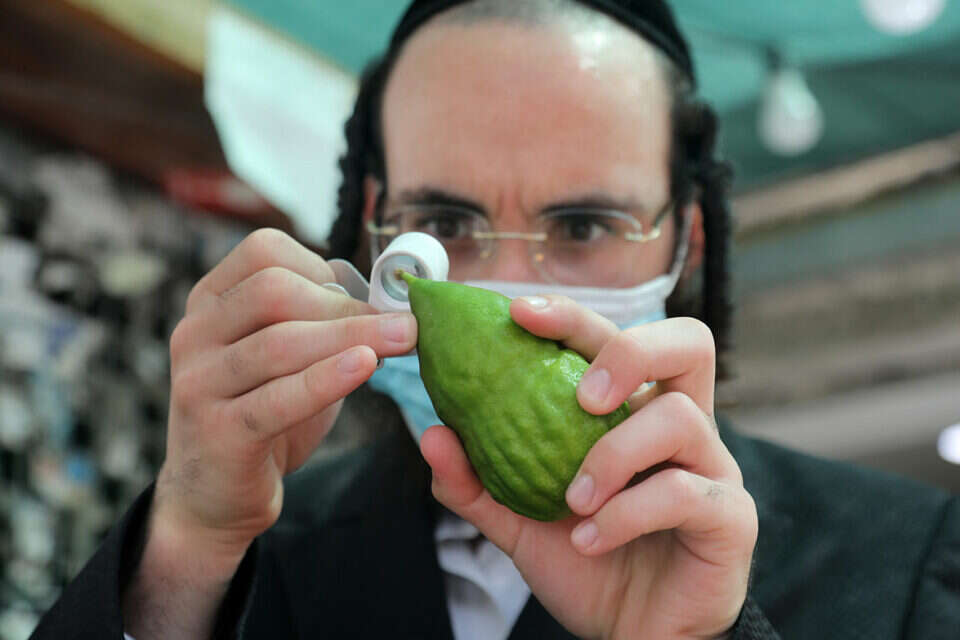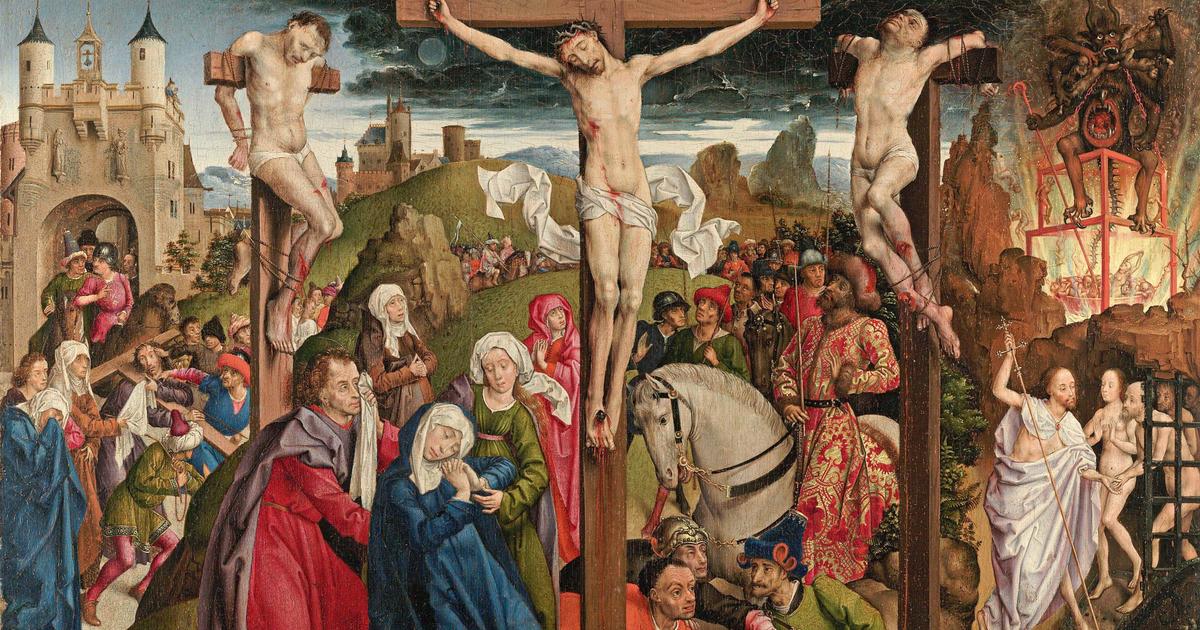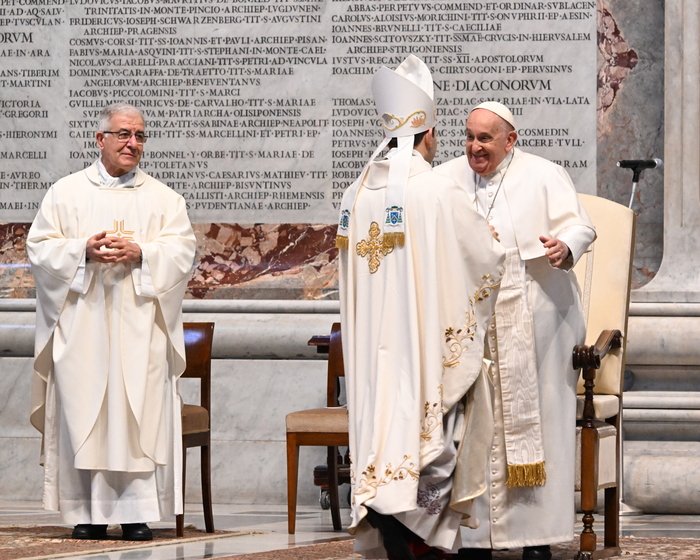One box of etrogs, which made its way from the Greek island of Corfu to Jerusalem in 1842, was in the possession of a "stone thrown into a lake" and created many waves in it.
Waves that greatly affected life in the old Jewish settlement in the Land of Israel and contributed to the development of Jewish agriculture and the Zionist enterprise in the Land of Israel.
The history of etrogs in Israel and in the State of Israel includes an abundance of plots, struggles, quarrels and "combos" that are almost unimaginable when you look at this little fruit, the etrog.
Until 150 years ago, the size of the etrog in the Land of Israel by Arab peasants only.
In Nablus and Jericho there was a concentration of citrus orchards, but the main and largest growing area was in Umm al-Fahm.
These etrogs were small, emaciated and shabby, but there was no fear of "assembly", the same connection between different varieties, which invalidates the kosherness of the etrog.
The etrog tree has a weak stem, and in order to increase its yield, a strong branch of etrogs absorbed in the tree was formed on the strong trunk of the lemon tree, which developed and yielded a large yield of etrogs.
The assembly operation required advanced agricultural knowledge, which was not in the possession of the Arab peasants at the time.
"It is not for nothing that our ancestors, our rabbis and geniuses from generation to generation, chose to bless but on the etrogs of Umm al-Fahm," wrote Yoel Moshe Salomon in the newspaper "Lebanon" in the middle of the 19th century, " .
The etrog trade in the Land of Israel was conducted for centuries by several families of Sephardic Jewish merchants from Jerusalem, whose etrogs were their expertise and the knowledge they had accumulated was passed down through the generations from a white father.
The Arabic language, which was spoken by the Sephardic Jews of Jerusalem, allowed them to conduct lively trade with the Arab peasants who grew the etrogs.
Everything was run smoothly, until in 1837 a strong earthquake destroyed most of the city of Safed.
Following this, a large part of the Ashkenazi families who survived after the disaster, descendants of the "Aliyat HaBaal Shem Tov" who came to Safed several decades earlier, moved to Jerusalem.
When they came to Jerusalem, the Ashkenazi merchants of Safed saw that it was good, and began to trade in etrogs as well.
This fact, of course, angered the Sephardic Jews in Jerusalem and the rift between the communities intensified.
Even before that, two other disputes clouded the Sephardi-Ashkenazi relations in the old Jewish settlement, the first on the slaughter and the second on the distribution money, but it seems that the etrog quarrel, mainly due to what developed over the following years, brought tensions between communities to a peak.
There was so much hostility that there was a fear of a real rift in the Jewish world, without the possibility of reconciliation.
• • •
As in many other cases of power struggles related to religious matters, the financial issue related to etrogs, supposedly hidden behind the scenes, was in fact the main cause of the great quarrel and hostility that developed between the Sephardim and Ashkenazim in the old settlement in the country.
With all due respect to the Jewish tradition and the other religious emphases shouted out loud by the hawks, Sephardim and Ashkenazis alike, the size of the etrog market in Israel in those years was nothing compared to the huge potential that began to develop for the "Eretz Israel" etrogs. East Europe.
These longed to hold and perform the "rocking" of the Sukkot holiday with an etrog from the Land of Israel and were willing to pay its weight in gold, no matter its size and shape.
Unfortunately, the transport ties that were still loose between the Land of Israel and the Diaspora did not allow for the efficient transportation and marketing of citrons from Israel to Europe.
European Jews paid their weight in gold.
An etrog orchard in Israel in 1900, Photo: Zadok Basan
An "original" etrog from Eretz Israel would come to the community in Europe only if one of the people from Shdar visited it, the same "Durban emissaries" who would come from Eretz Israel to communities in the Diaspora to raise money for yeshivot and the old settlement. The estimate in the period before Sukkot.
On the synagogue island, buyers from the Shadar had the right to hold the etrog for a short time and bless, and after everyone greeted and paid for the blessing accordingly, the apostle would make a "tender" between the synagogue island, and the one who managed to raise the largest amount of all community members would buy the The rare etrog and displays for display and pride in its sukkah.
In short, Israeli etrog in those days became a major tool in the "Shnor" industry, but most Jews in Europe had to make do with Mediterranean etrog, with the large and elegant Greek island etrogs being the market leaders and raking in huge fortunes for Greek growers and Corfu Jewish marketers.
Therefore, in the Corfu of the 18th and 19th centuries, a Jewish community prospered where wealthy etrog traders prospered.
The large Jewish community in Corfu then made up about one-tenth of the island's population, which numbered about 50,000.
The relationship between them and the Christians was reasonable, and since even in Corfu the Jews were forbidden for many periods to own land - some gave their hand in international trade, taking advantage of family and community ties around the world.
The Christian people of Corfu consumed little of the etrogs they grew for local jam production, and sold most of them throughout Europe through merchants from the Jewish community.
Thus, both the Christian growers and the Jewish merchants made a large fortune from the etrog market.
This is where a box of citrons from Corfu comes into the picture, which he sent to Jerusalem in 1842, the rabbi of the Jewish community on the island of Yehuda Bibbs, when the recipient was "Rishon LeZion," Rabbi Avraham Gagin.
The box was like a "gift", but the real reason is "marketing content" and strengthening the brand of etrogs grown in Corfu.
In the background, it is important to remember that the Corfu etrogs fought in those times for the Jewish market in Europe, especially against the Italian and Moroccan etrogs.
The Jewish etrog traders in Corfu thought that with the help of the shipment to Rabbi Gagin in Jerusalem, they could add to the "Corfu etrog" branding the fact that "Rishon Lezion" itself uses them.
The fact that a box of citrons from Corfu arrived in Eretz Israel and is in the "Rishon LeZion" reached the ears of Rabbi Yehuda Halevi Margoza, who was a member of the Sephardi community and rabbi of the Jewish community in Jaffa.
Rabbi Yehuda, who was born and lived as a child in the town of Dubrovnik on the shores of the Adriatic Sea, located near Corfu, knew the quality of the island's etrogs, and he and his family even used them on Sukkot.
The name Margoza, by the way, known from the street in Jaffa named after him, was given to Rabbi Yehuda from his hometown, since Ragusa was Dubrovnik's ancient name.
The name should be pronounced with purple below the letter M and a pinch below the letter R, and not as many pronounce, with a pinch below the letter M.
Either way, Rabbi Yehuda immigrated to Israel with his family in 1801, when he was 18. In the years that followed, he began to believe with all his heart that one should not wait for redemption with an embrace.
He promoted the idea, completely delusional at the time, that the Jewish community in Israel should make a living from manual labor, and argued that "a significant change should be created in the lives of Jews in Israel and the inaction must be made to move to Jewish manual labor and establish agricultural settlements in Israel."
In the first stage, on the way to receiving the etrogs from Corfu and fulfilling his agricultural-Zionist plan, Rabbi Yehuda marched from his home in Jaffa to the port in 1842.
He sent a telegram from the Austrian post office to Rishon Lezion, requesting to receive the etrogs after Sukkot.
When Corfu etrogs reached him, which "Rishon LeZion" used during the holiday, Rabbi Yehuda approached the second stage of his program.
He purchased, together with two Spanish partners named Sage Avraham Panso and Sage Yechiel Bachar, and with the help of the Sephardic community in Jaffa, 100 dunams of land northeast of Jaffa, on the banks of Wadi Musrara, is Nahal Ayalon.
On this area, Rabbi Yehuda established the first Jewish orchard in the Land of Israel.
He planted the etrogs he received and began to realize the vision of the Hebrew agricultural work in practice.
In this action he restored to the Sephardic community the respect taken from it, following the Ashkenazi takeover of the etrog market in the Land of Israel and the suppression of the Sephardim, as had happened in previous years.
It is important to emphasize: the year is 1842, four decades before the establishment of the first Jewish settlement (Petah Tikva) and about 55 years before the first Zionist Congress.
Rabbi Yehuda, with the help of leveraging one box of citrons, was in fact the pioneer before the camp in the journey of Jewish redemption of the lands of the Land of Israel and perhaps even the first true Zionist.
Why, then, except for a street named after him in Jaffa, where, as mentioned, he served as rabbi of the Jewish community, did Rabbi Yehuda never receive the respect he deserves for his groundbreaking deeds and his enormous contribution to the development of the Zionist enterprise in the Land of Israel?
Could it be that the reason is that Zionist history was written by the person who wrote it?
Maybe.
A pioneer before the camp.
Rabbi Yehuda Halevi Margoza,
• • •
In any case, Rabbi Yehuda appointed R. Yaakov ben Shmul, a Jew who immigrated from Tangier, Morocco, to cultivate Moroccan etrogs, whose name had spread far and wide, to manage the agricultural work in the orchard.
He ordered Ben Shmol to employ only Jews in the orchard work.
The orchard orchard developed, but Rabbi Yehuda and his associates found it difficult to manage it on a daily basis and therefore leased it to a lady named Clorinda Minor, a Christian American who immigrated to Israel in the belief that she would bring redemption closer by encouraging Jews to work the land.
The lease agreement was made only after Mrs. Minor had indeed undertaken that she too would employ only Jews in the agricultural work, and so it was.
The orchard developed rapidly and also became the first agricultural farm in the Land of Israel to grow other citrus and fruit trees, such as lemon, orange, pear, apricot, quince, almonds, figs and more.
In addition, not only etrogs were taken from the orchard for further planting elsewhere, but also seedlings and seedlings of various citrus and fruit trees from which many other orchards in the country developed.
Along with the development, the etrog orchard became the pride of Jaffa's Spanish community, which in addition to the honor and prestige also gave it a place to hang out and have picnics.
"About fifteen families - a young man and a woman, Taf and Zaken, went out in the morning in the cart of the cart owner R. Yosef Horowitz, who plays, or 'Yosli Shpiler', equipped with cooking utensils and food supplies," Israel Rokach wrote in his book "Orchards Tell."
"The women cooked mostly lustful foods, and the same cart owner, after unpacking all the luggage in the orchard, would become a 'musical instrument' and play the clarinet, violin and drum alternately. With the help of his four sons, all 'musical instruments' trusted in all the instruments, The sunset, which would then return the participants to Neve Tzedek in its cart, and the travel time about half an hour back and forth. "
• • •
In 1853, 11 years after planting the etrog orchard, Rabbi Yehuda began to use the third stage with all his might: the development of the orchard and citrus industry in the Land of Israel.
He realized that with his meager power the goal would not be achieved, so in July 1853 he wrote a letter to Moses Montefiore at his place of residence in England, with the aim of persuading him to purchase the first orchard he had established.
Rabbi Yehuda told Montefiore that there are already 5,310 etrog trees in the orchard, along with other fruit and citrus trees.
"Harini declares that I am the first Israeli to come here to Jaffa and I started alone to cultivate the land by planting a garden," he wrote, "and if I could carry out my plans I would make other Jews do as I did, following my example. Even the Ishmaelites here were amazed to see a Jew. Cultivates the soil. "
Montefiore himself arrived on his fourth visit to Israel in 1855, not long before visiting Constantinople, where he traveled to ask the Sultan of the Ottoman Empire Abdulmajit I to grant him a "Firman" (royal decree) authorizing him to purchase land in Israel for charity.
As early as that year, Montefiore used "Firman" to purchase the land outside the walls of the Old City on which Mishkenot Sha'ananim and Yemin Moshe were built.
He then went down to Jaffa, to visit the orchard of Rabbi Yehuda, who had corresponded with him on the subject for more than two years.
Montefiore fell in love with the idea that he would be the one to get Jews to seize the land of the Land of Israel through agricultural work, which began with growing etrogs and other fruit trees.
He purchased the orchard and changed its name to "Montefiore Orchard", but the orchard was unsuccessful due to a variety of administrative problems, until it was uprooted and the Montefiore neighborhood was established on its territory.
However, it has been used for years as a habitat for many etrog orchards in the Land of Israel, called "Spanish" etrogs.
• • •
At the end of the seventh decade of the 19th century, major events in the region suddenly launched the potential of marketing etrogs from the Land of Israel to the vast community of European Jews.
In 1869 the Suez Canal was inaugurated, and sailing in the eastern Mediterranean basin became safe.
Ship lines from European ports, including the ports of Marseille, Odessa, Venice and more, began to call at the port of Jaffa.
On their return to Europe, the same ships carried in their bellies cargo of "Jaffa" oranges from Jaffa, and towards Sukkot also the large, elegant and fragrant etrogs, the fruit of the etrog orchard controlled by the Spanish community, and etrogs from many other orchards made from the etrog seeds.
The Ashkenazi etrog merchants in Jerusalem, those who moved to it from Safed, watched with bewilderment as a hegemony returned to the Spanish community merchants, for who among the Jews of Europe would now want to consume a faded and small etrog from the Arab orchards?
The Jewish communities in Europe eagerly consume the Hippo etrog and pay its weight in gold.
Advertising poster for the etrogs of the Land of Israel in 1930,
In response, the Ashkenazi merchants chose the path of severely blaming the kosherness of Jaffa etrogs.
"Jaffa etrogs originate from assembly trees, heaven forbid !!!", they shouted, and the Ashkenazi court in Jerusalem also participated in their plot, issuing a ruling in the form of a "call for condemnation of Jaffa etrogs," as well as the "Lebanon" newspaper owned by Yoel Moshe Salomon, one of the Ashkenazi community leaders In Jerusalem.
The Ashkenazi community in Jerusalem sent urgent emissaries to the port of Jaffa, where they boarded the ships and sailed to the community centers in Europe, carrying the verdict of the Ashkenazi court in Jerusalem, which rules out Jaffa's etrog.
As a backup, they held defamatory press clippings from "Lebanon", which say in essence that "the Jaffa etrogs of the Spanish community are elegant, beautiful and have a pleasant smell - but are unsuitable for use due to fear of assembly.
"The original Etrogs of the Land of Israel, marketed by the Ashkenazi merchants, are the only etrogs without fear of assembly. Every family that blesses the etrog from Jaffa does not have a blessing obligation at all, since its blessing was void."
The Spaniards, for their part, did not freeze on the yeast but fought the battle of their lives, for it was not only a matter of much money, but also respect.
Will they be deprived of their status in the etrog market again?
Israel came to their aid Dov Frumkin, one of the leaders of the Jewish press in Israel and the owner of the newspaper "Havatzelet", who venomously attacked the Ashkenazi leadership in Jerusalem and accused it no less of "fraud and deception of the holy Jewish public."
The catapults were launched from side to side, and a terrible Pandora's box was opened between the hawks.
It called the two "tyrants of Judah and Jerusalem," while the other called each other "a member of a band of corrupt men, a member of the assembly of traitors," "sinful men of disgrace to the human race," and other such "blessings."
Ashkenazi boycott letters against Sephardim and vice versa were written, and the Jewish fabric in the Land of Israel crumbled and made life unbearable.
• • •
In their distress, the people of the settlement set up a committee and appointed prominent members of the Sephardic and Ashkenazi community in Jerusalem.
The role of the committee was to go out and explore the country along its length and breadth, to visit every existing etrog orchard and decide who is a kosher orchard and who is an orchard with non-kosher etrog trees, assembly trees.
The committee's travels have become a love story for the Land of Israel.
Each trip was joined by two journalists, one from Havatzelet and the other from Lebanon, in addition to a report it produced - the committee's importance was that for the first time detailed travel descriptions were published in the Jewish press in Eretz Israel, giving readers a different, refreshing and optimistic picture of Nofi The wonderful land that was so different from the atmosphere and the evil spirit that was blown in those times in the places of the Jewish community in the Land of Israel, especially in Jerusalem, Jaffa, Safed, Hebron and Tiberias.
Readers suddenly saw the Land of Israel in a different way, at a time when the residents of these settlements did not usually leave their settlement.
A new journalistic writing genre has developed that glorifies the landscapes and wonderful features of the Land of Israel and spreads great love for the Land, a phenomenon that undoubtedly contributed to the development of a new Jewish settlement in the Land of Israel, beginning in the early 1980s.
As for the committee's report at the end of its activity, "Gilo Naot" was not there. ".
On the basis of this testimony, the Ashkenazi court trained the Umm al-Fahm etrogs controlled by the Ashkenazi merchants, and disqualified the Sephardic Jaffa etrogs.
After the submission of the report, the difficult relations between the communities continued in Israel. In the market, into which the citron growers and merchants from Corfu entered powerfully.
• • •
What changed the picture was a cruel and mysterious murder that took place a few days before the Passover holiday of 1891, when a sack with the decapitated and dismembered body of an eight-year-old Jewish girl was found in the yard of a Jewish tailor in Corfu.
In an astonishingly short time, and in an organized and malicious manner, a false rumor began to spread among the Christians that the girl was not a Jew but a Christian, and that the Jews had murdered her as a "ritual murder," for the purpose of using blood to make matzah.
It was, of course, a degrading blood libel organized by anti-Semites with deliberate intent, but it caused a wave of cruel Christian riots among the Jews of Corfu.
Dozens of Jews were killed, hundreds were injured, and about 3,000 of the 5,000 Corfu Jews — mostly able-bodied among them — were forced to leave the island in a hurry while selling their property in lentil stew.
The Jewish world has entered into immense anxiety.
This was less than a decade after the "Storms in the Negev" riots of 1882, which took place in the Russian Empire.
In response, the Jews decided to return to war by imposing a blanket boycott on the etrogs of Corfu, demanding that all Jewish communities in the Diaspora use only the etrogs of the Land of Israel.
Thus the cruel trouble of one became the blessing of the other.
While the Corfu community was almost wiped out, including the businesses of the Jewish etrog merchants, the Ashkenazi and Sephardic etrog merchants in Israel hurried to seize the opportunity and quickly made a compromise from a classical Panikanian. Judaism in Europe and has now stated that "all Israeli etrogs, without exception, are kosher and worthy."
Most of the great Ashkenazi rabbis in Jerusalem joined the call and abolished the ban on the use of Jaffa etrogs, as well as a ban on any other etrog made in the Land of Israel.
To ensure that the marketing action of all etrog traders in Eretz Israel, Ashkenazis and Sephardim alike, will indeed succeed among the Jewish communities in Europe, the etrog traders in the country launched a negative and aggressive marketing campaign against Corfu etrogs and called for their boycott.
The messages of the campaign fell on deaf ears in the Jewish world, and the corfu etrogs were now defined as "a symbol of the oppressors of Israel as a sequel to the evil Antiochus" and were called derogatory names such as "bastard etrogs" or "bloody etrogs".
The boycott of Corfu etrogs was presented as a proud Jewish symbol from which "the accursed anti-Semites in Corfu and elsewhere will see that the Jews have the courage to stand up for their souls and the honor of their people and faith."
Thus, in fact, one of Corfu's thriving etrog industry collapsed, but the Eretz Israel etrog industry, both of the Sephardim and of the Ashkenazim, erupted and grew, and the ethnic quarrels were forgotten.
Or maybe not.
Spending hours.
The etrog market in Tel Aviv in the 1950s, Photo: Zvi Nehor Collection, "Beitmona" website
• • •
More than a century later, Israel has for years been a world center for growing etrogs and marketing them in Israel and around the world.
Today, it is a business that rolls according to huge capital estimates, for etrogs along with all the Sukkot products such as thatch, willow, myrtle, lulav, ornaments and ready-made sukkot.
Nearly 800,000 etrogs were sold in Israel alone last year, and another large quantity went to Jewish concentrations around the world, with the largest etrog market, of course, being found among the Jewish communities in North America.
Today, the Jewish-Ashkenazi takeover of the cultivation and marketing of etrogs in Israel has been completed, as the Arabs no longer grow etrogs and there are no more Spanish etrogs on the market.
Except for "Yemenite etrog", all other etrogs bear strictly Ashkenazi names such as Halperin, Friedman, Gross, Shapira, Kirschenbaum and more.
The etrogs are now sold to everyone and are purchased by everyone, while for the etrogs of some of the orchards one can find one kosher certificate or another.
The only ones that stand out from the rest are the etrogs of Kfar Chabad, an orchard that originated from the etrogs of Calabria in southern Italy, which were favorites of the Rebbe of Lubavitch, and the seeds of etrog he sent to Israel established a large etrog orchard in the village of Chabad.
Most ultra-Orthodox families have an "expert" who purchases for the whole family.
Examination of etrogs in Safed before Sukkot last year, Photo: Eyal Margolin / Ginny
But here too there is a problem.
The reason why the Lubavitcher Rebbe used Calabrian etrogs in Italy is related to a family tradition that began 300 years ago, when his ancestors in Russia decided that "Calabrian etrogs are not complex."
A-ma-ma, most of the etrog trees hundreds of years ago were not complex, but the years passed and in Calabria they also began to assemble etrog trees on lemon trees.
So what do you do with the large citron orchard planted in the village of Chabad?
In order to "train" the use of Calabria etrogs, despite the well-known fact that most Calabria etrogs these days grow on complex trees, Chabad supervisors go to Calabria every year, claiming that they know exactly which etrog trees there are not complex. Calabria to the Chabad community only from these trees.
And there is also the matter of price.
Calabria etrogs are much more expensive than most Eretz Israel etrogs, so only those who can afford Chabad followers will buy etrog from Calabria in Italy. The rest will buy the Kfar Chabad etrogs.
At the same time, in order to complete the mitzvah of the fruit from the Land of Israel, families who can afford to purchase Calabria etrog will usually also purchase the Chabad etrog, and will shake with it once and for all.
Compared to the Chabadniks, Rabbi Avraham Yeshayahu Carlitz, known as "Vision Man" and active in Lithuania, claimed that the only uncomplicated etrog trees are those grown in Morocco and for many years his followers used these etrogs. Passionately for exclusivity on etrogs originating from Morocco.
• • •
From then until today, the etrog is not only the one that receives the most attention among the four species, but it is doubtful whether there are many objects of Jewish worship that receive a great aura like it.
The investment and time allocated each year by the ultra-Orthodox believer to purchase the etrog are numerous, and involve countless tests with a magnifying glass and without, consultations, information gathering and collecting gossip, receiving expert opinions and spending hours in the four species markets.
The same believer enjoys great pleasure in the process of searching for the ideal etrog, one that is an adequate return for payment and search efforts.
There is nothing happier than a believing man who proudly presents to his friend the wonderful etrog that he managed to get his hands on.
כיום, לרוב המשפחות החרדיות יש "מומחה" שחוקר ודורש מדי שנה עבור המשפחה, עד שלבסוף הוא רוכש את האתרוגים לכל בני המשפחה, על פי התקציב המוקצה לעניין. לרוכשי אתרוגים רבים יש את המוכר הקבוע שלהם, זה ששומר להם אתרוג איכותי מתחת למדף מדי שנה, "אתרוג מובחר ומהודר במיוחד בשבילך, במחיר טוב", ממש כמו נוהל שמירת ה"חצי לחם" בחנויות המכולת של שנות הצנע.
אין ספק שפרי עץ ההדר הזה, האתרוג, עשה דרך ארוכה מהימים שבהם רכבו סוחרי צפת וירושלים של אמצע המאה ה־19 על חמורים במשך ימים עד לפלאחים באום אל־פחם, לצורך ניהול משא ומתן על רכישת האתרוגים.
למרות הדם הרע והסכסוכים שנגרמו בגלל האתרוג במהלך 150 השנים האחרונות, הוא השפיע על המפעל הציוני בארץ ישראל וסייע להעמקת הקשר בין העם היהודי לארצו, ועל כך יש לברך מדי שנה, נוסף על הברכה המסורתית המושמעת מדי חג סוכות בשבחו של הפרי.
דייויד סלע הוא יו"ר המועצה לקידום המורשת הישראלית (ע"ר) ועורך אתר "נוסטלגיה אונליין"









